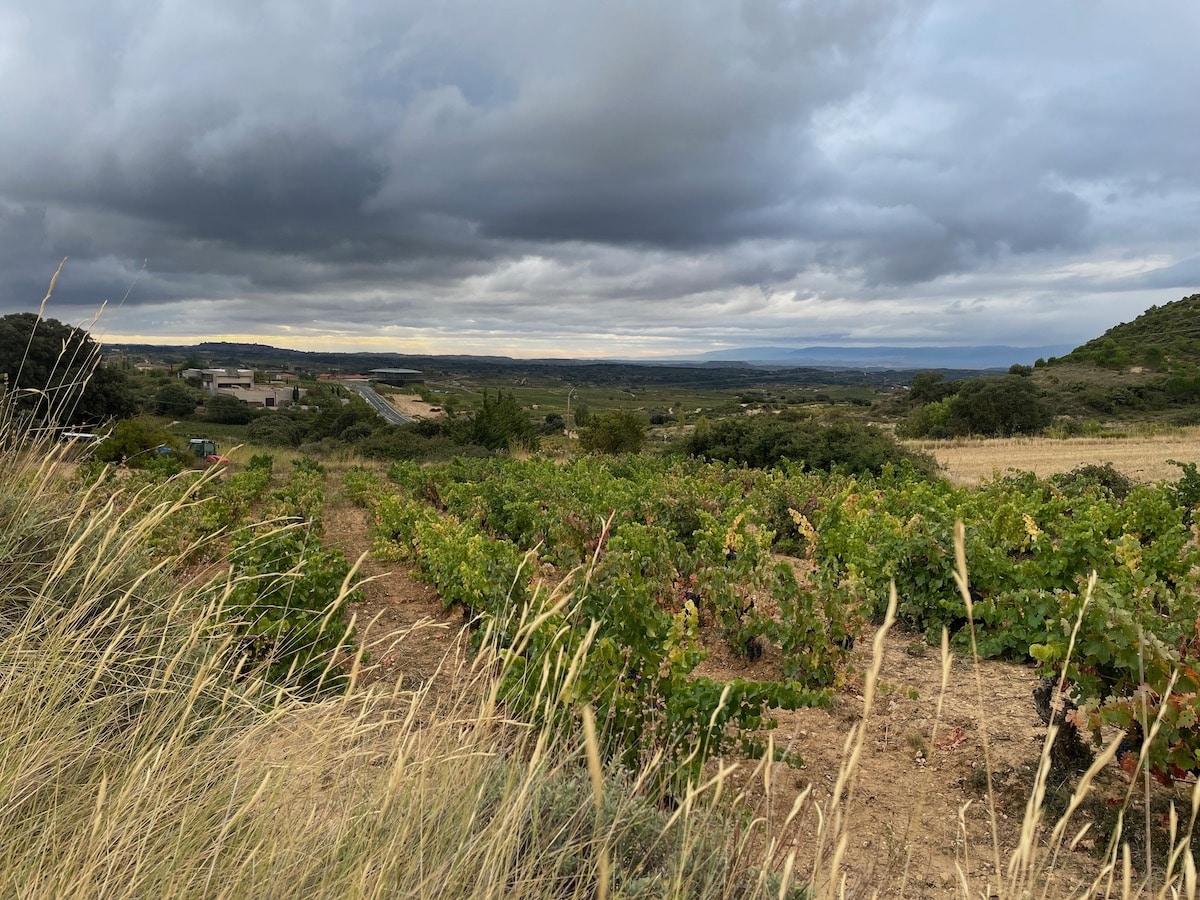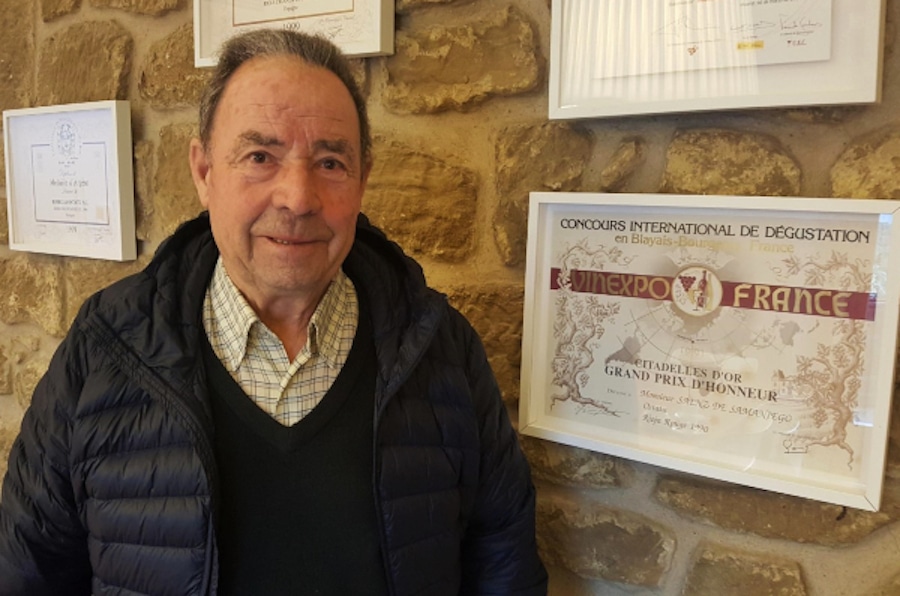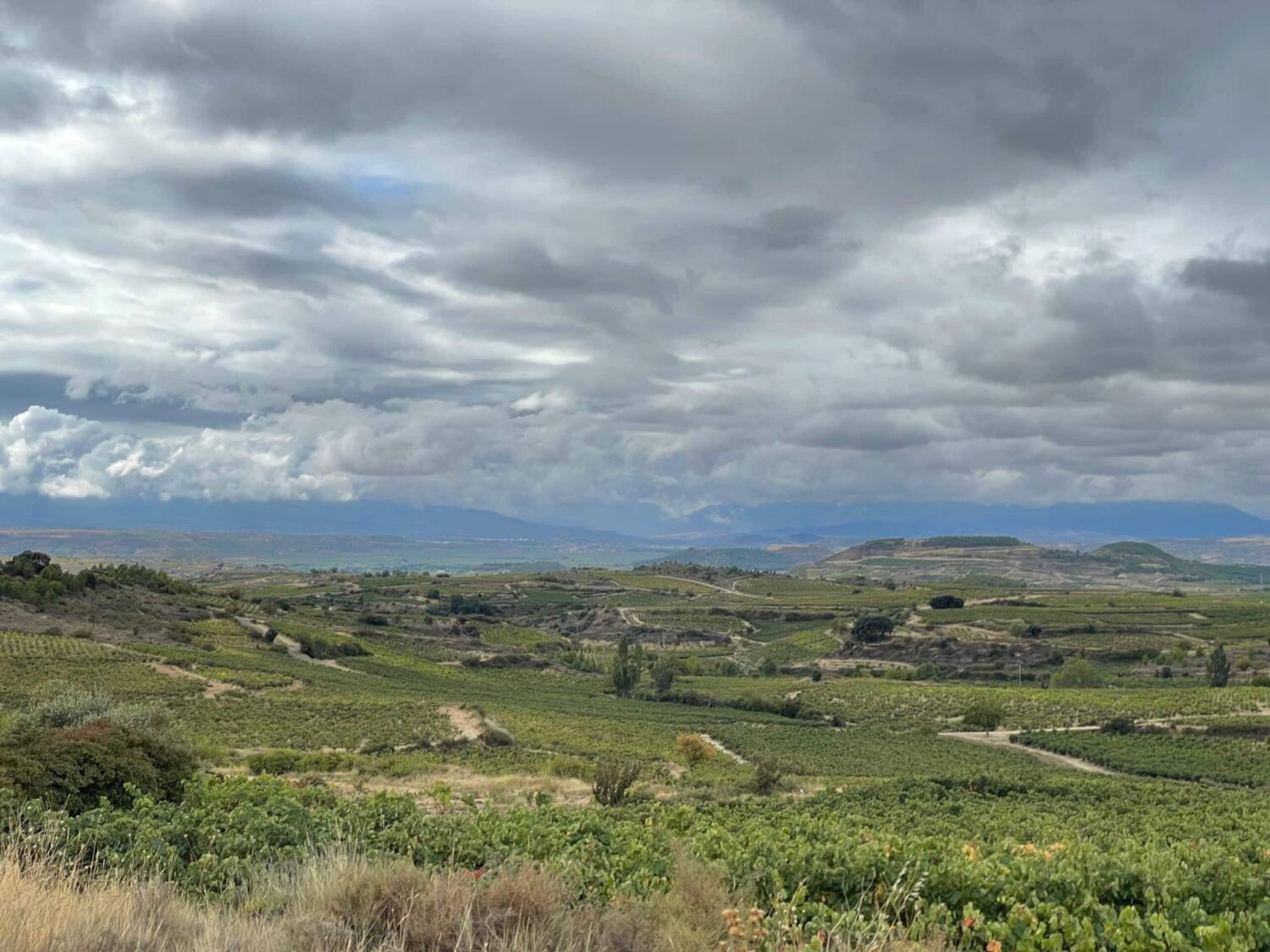For a while now, a few years at least, we’ve wanted to dedicate an entry in our Viewpoints series to one of the most extraordinary places in our country, the Rioja Alavesa.
And we have finally had the opportunity to do so. So, some of us who work at the blog spent a few days accompanying the teams who go out and harvest and process the grapes until they become wine. With everything we’ve recorded, photographed, and learned, we’ve prepared a series of entries which we hope will illustrate what the harvest is like and what it means for the Basques of the Rioja Alavesa.
To do so, we requested the collaboration with a leading family winery in the area: Bodegas Ostatu. We’ve spoken about them on many occasions, and there has been a warm relationship between us for years.
This is the moment to remind everyone, as always, that our articles (unless otherwise stated) are not promotional, nor are they paid. We do them because we find them interesting and because we believe that they can provide information that will be of interest to our readers.


This series of articles about the Rioja Alavesa grape harvest is one of those cases, which make up the majority, where the only reason that guides us is the obvious interest in the topic at hand.
We want to help everyone understand, as we ourselves have over the past few days which we spent at this family winery, what the harvest is, what it means for the residents of the area, and what history lies behind it and future awaits it.
The First Entry
This first entry is dedicated to Bodegas Ostatu, and the reasons that brought us here, why we chose it as the base for writing up these articles.
Subtitles in English
As we explain in this short introductory video, the reason is this historical links the Sainz de Samaniego family, which owns Bodegas Ostatu, has with these lands. But, mor than that, it is the participation and influence of the current patriarch of the family, Doroteo Sainz de Samaniego, that caused the “revolution” the small winemakers in this region underwent in the 1970s. This revolution has led to the Rioja Alavesa we know and love today, where family wineries enjoy such weight and prestige.


In this first entry, we also want to highlight elements that we believe are essential to understand what the Rioja Alavesa is: the inhabitants’ deep, historical connection with the production and culture of wine; the hardships and problems, the work and effort behind these last few years of strength and prestige; and, as we noted earlier, the role the small growers played 50 years ago in the process to create the concentration of small and medium family wineries with such prestige.
To learn about the harvesting process, and to find out what being a winemaker and wine businessman in the Rioja Alavesa means, and to discover some of the keys to the challenges this Basque region has faced, we spoke with Gonzalo Sainz de Samaniego, one of Doroteo’s sons, who is at the forefront of Bodegas Ostatu.
In other entries, we’ll also speak of the problems they now face, which we’ve mentioned before on the blog, which are important enough to be discussed, at length, by, for example, The Guardian, and by British wine guru, Tim Atkin.
As one must turn to the best in order to transmit the most relevant information, we decided to turn to the Rioja Alavesa Blog to share that essential information. We shall be using it with the conviction that it will help our readers as much as it has helped us to better understand what the Rioja Alavesa is. That is also why we highly suggest everyone interested read and follow it.
With this blog, we hope to discover one of the greatest tragedies the region went through, and to understand the impact the blight brought with it as it killed the vines at the beginning of the 20th century. We’ll also learn about the leading role Doroteo Sainz de Samaniego played in the radical transformation that took place in the region fifty years ago.
The tragedy of blight and other crises
Blight was a stroke that could have killed off the Rioja Alavesa. Its poor soil, good only for vineyards, were left bare. So too were its towns, as huge numbers of people had to emigrate just to survive. Many of those people had to leave their homes: some to other places in the Basque Country, or even to the New World, where a good number of residents ended up. And it was in the New World where winemakers found the solution to finish off the blight and return the vineyard landscape to the Rioja Alavesa.
But that wasn’t the only hardship the regional economy would suffer, as you can read below.
Blog Rioja alavesa – 12/1/2017 – Euskadi
Cien años de la superación de la filoxera en Rioja Alavesa (I)
Se cumplen ahora cien años de la superación definitiva de la filoxera, un pequeño insecto que llegó a Álava en 1902 y estuvo destruyendo nuestro viñedo en la primera década del siglo XX, reapareciendo todavía por aquí y por allá en las plantaciones hasta el año 1916.
(Follow) (Automatic translation)
Blog Rioja alavesa – 19/1/2017 – Euskadi
Vaivenes en la economía de los viticultores alaveses (II)
Veíamos en el artículo anterior como afectó la filoxera en la economía de varias generaciones de riojano-alaveses, en un claro ejemplo de como factores exógenos, inesperados e incontrolables pueden alterar drásticamente la economía de Rioja Alavesa. A lo largo de la Historia ha habido muchos episodios de este tipo, pero debemos reconocer también que ha habido muchos factores internos, del propio País Vasco, que han condicionado nuestra economía.
(Follow) (Automatic translation)
About Doroteo Sainz de Samaniego and the “winemakers’ revolution” in the Rioja Alavesa
As we can see in the two articles above from Blog Rioja Alavesa, there are outside factors that have had a huge influence on the regional economy, dedicated almost exclusively to making wine…or nothing.
But we’ve also seen how these problems are not something that can easily vanquish its inhabitants. We know saying “the Basques don’t give up easily” is a bit trite, as this is not a quality that is exclusive to our compatriots; some might say we’re going so far as to use a “stereotype.” Be that as it may, it’s still a tangible reality, which can be proven.
The life of Doroteo and many others of his generation is an example of that. Not only did they face up to an unfair situation that left them weak and dependent, they were also able to fight against the powerful and turn the tables. Thanks to that, they were able to transform from producers/sellers to wholesalers. This meant they could turn the region into a universe full of family wineries that shine like true winemaking stars.
We’ll be returning to the Blog Rioja Alavesa to learn about this leading figure in this part of our story.
Blog Rioja alavesa – 16/1/2020 – Euskadi
El bodeguero que se negó a vender 3 cosechas de vino
Qué fácil es escribir en un titular que Doroteo Saenz de Samaniego se negó a vender tres cosechas, durante tres años consecutivos, a los vinateros de Bilbao que, a principios de los años 70, jugaban con las fluctuaciones del mercado.
(Follow) (Automatic translation)
Blog Rioja alavesa – 21/1/2020 – Euskadi
“He sido un luchador nato de Rioja Alavesa”
El vitivinicultor Doroteo Saenz de Samaniego tiene la convicción, a sus 79 años, de no haber claudicado frente a los poderosos, de que en su época luchó dignamente por la Comarca entera.
(Follow) (Automatic translation)
Finally, we’d like to thank all the people who work at Bodegas Ostatu who put up with us, our cameras, our walking back and forth, and our incredible ability to always be right in the way of their work. Despite all that, there was not a single askew glance or rude gesture, just kindness and helpfulness. Eskerrik asko.
Last Updated on Dec 3, 2023 by About Basque Country





























